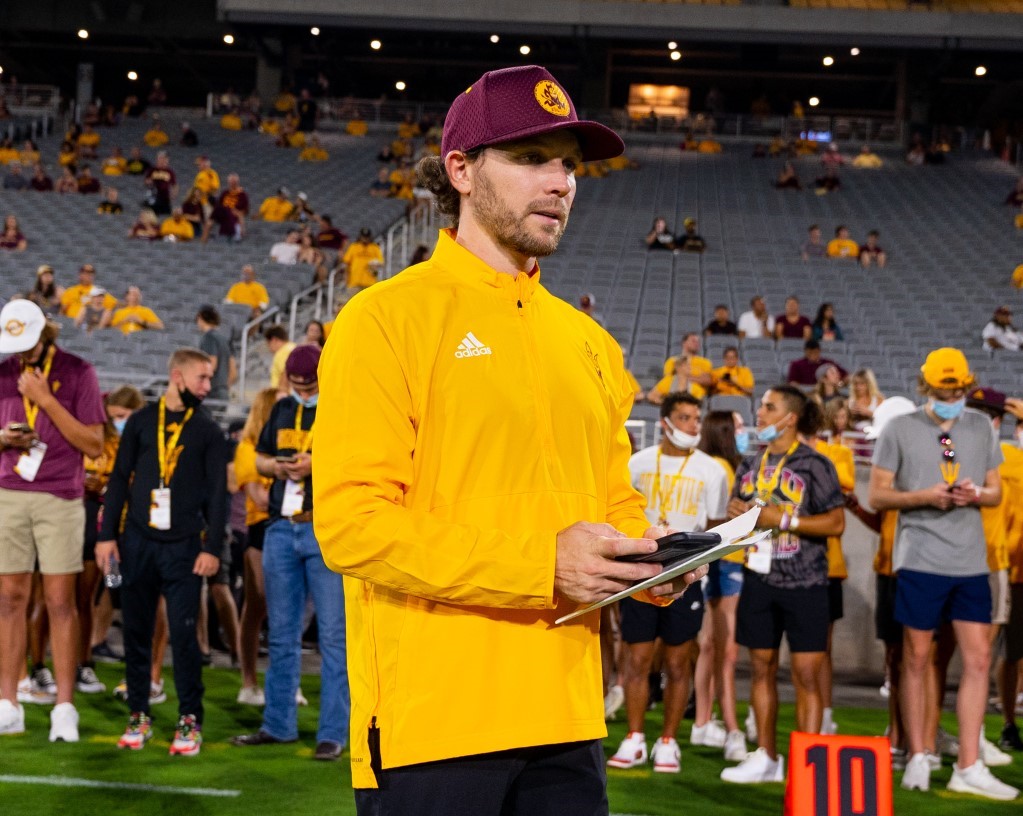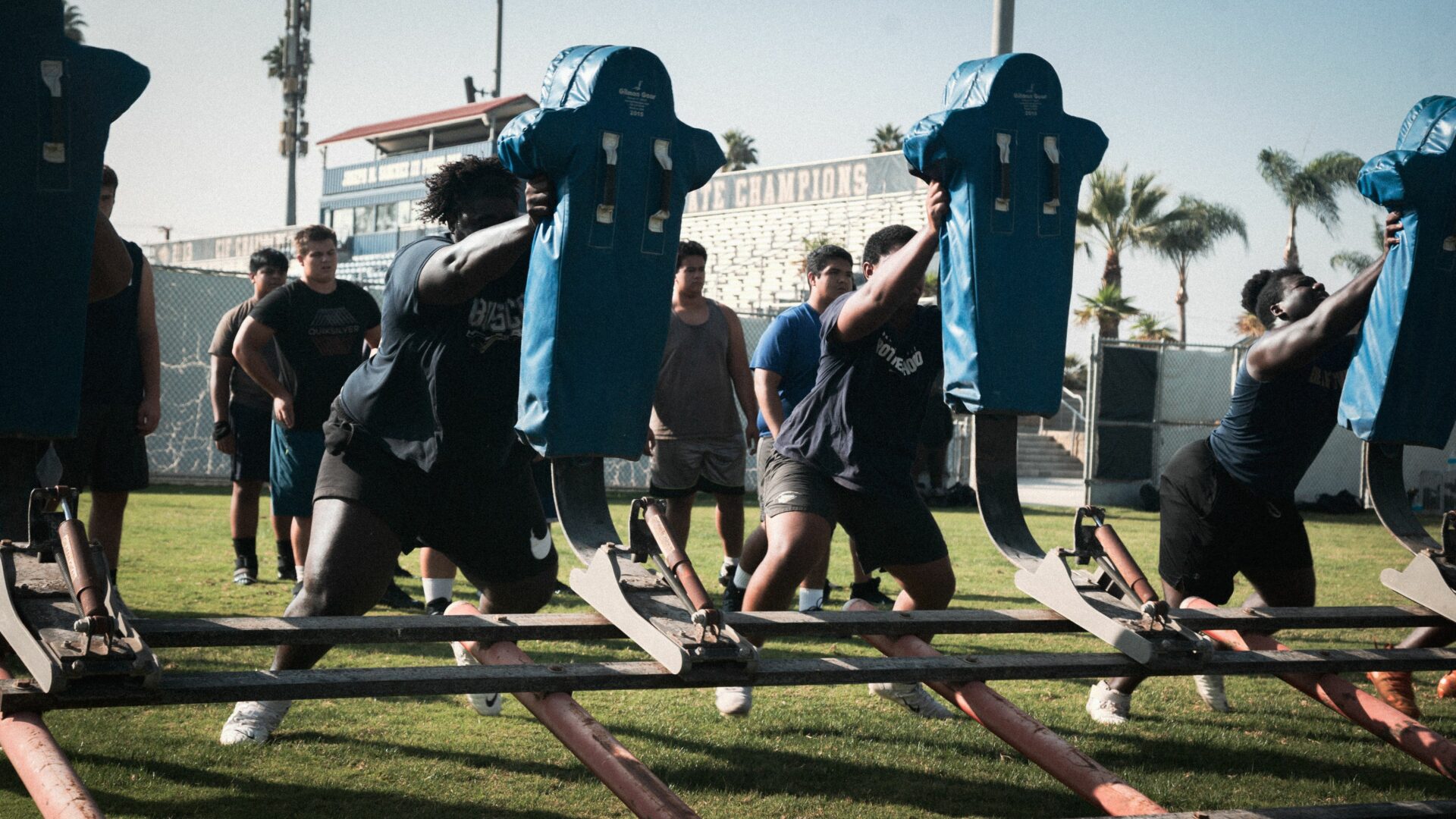An Athlete’s Guide: College Football Recruiting Process
Welcome back to “An Athlete’s Guide” on The Wire. This week, our focus will be on football and its recruiting process.
As mentioned in “An Athlete’s Guide’s” first iteration about the college recruiting process, each sport is different regarding the way that athletes are recruited. Timelines, camps, rules/guidelines and other factors vary to a point where each sport must be addressed individually.
Coach Jason Mohns of Saguaro High School in Scottsdale, Arizona makes mention of the difficulty regarding football recruitment:
“It’s hard to get exposure for our players and get their name out there. If a school is from the east coast, or maybe they don’t have the budget to come out and recruit in Arizona, it’s hard to get your players in front of them.”
With as many participants as there are in high school football, athletes need to be on top of their academics, take all of the necessary steps and find a way to differentiate themselves.
Football Manager Ryne Rezac on Football Recruiting
This week, I sat down to discuss the capricious landscape of college football recruiting with our football manager, Ryne Rezac. Ryne previously worked with Arizona State University as their director of player personnel.
The main takeaway from the discussion is that a high school athlete needs to stand out. Hudl videos need to be quick-hitting, DMs need to be clear and concise. Football programs, and specifically recruiting departments go through hundreds of players every day. If pertinent information is lacking, or a highlight tape isn’t grabbing attention immediately, you will be lost in the shuffle.
“A high school football player needs to pop,” he said. “Coaches and recruiters look for specific things in every athlete.”

Following, readers will find expert advice that will afford any football player the opportunity to play football collegiately.
Background Information & NCAA Guidelines
As any good football recruiter will tell you, Ryne first discussed the importance of NCAA guidelines and eligibility requirements.
In order to maintain academic eligibility, a high school athlete must complete a specific number of core courses depending on their intended division. More information regarding a player’s academic requirements can be found on the NCAA website, or linked below:
Athletes should also take the time to research their own schools. Recruiting is a two-way street. High school football players should list “reach” schools, “realistic” schools, and “security” schools. After gauging interest shown by each college program, you can then adjust the list to more accurately portray who you should be reaching out to.
Creating Highlight Tape
“Hudl is a place where an athlete can really pop to a coach or recruiter,” mentioned Ryne. “Versatility, explosion, and overall athleticism are things that recruiters continuously watch for.”
Ryne believes that shorter Hudl videos are more likely to be well-received by recruiters. 90 seconds to two minutes of highlight-worthy plays will take you further than a 10-minute compilation of mediocrity.
“You need to frontload your videos with what you consider to be your best plays. Catch a recruiter’s attention and force their hand right away. Your best five or so plays should come in the first 30 seconds,” Ryne explains.
High schools will upload their football games’ film to their team Hudl page every week. It is the responsibility of the player to find their own highlights from this tape and edit it into a highlight package. After choosing the best plays that highlight their abilities, a player can then send this video to college programs around the country.
Communicating with Colleges
Utilizing social media when attempting to initiate contact with a college coach has become common practice in today’s recruiting landscape. But first things first: a college coach may not communicate with high school athletes until September 1st of their junior year. Keep this in mind when reaching out to a program.
Ryne says that this is an efficient way of marketing yourself to recruiters. However, there are good and bad ways to go about it.
Direct messages should not be too long, and they should require pertinent information regarding the athlete only.
“When we look at athlete’s social media pages, we are checking for a few things,” explains Ryne. “First, we want to make sure they’re a good person with no vulgar Tweets or pictures being posted. Additionally, we look for Hudl links, prospect profiles, GPAs, height/weight, and high schools.”
If this information isn’t located in your social media biographies, then a recruiter will already be on to the next prospect.
Once all social channels are updated, athletes should begin sending out messages to the schools they have on their list. According to Ryne, you will be more likely to receive a reply if you are sending messages to recruiting assistants or graduate assistants. If your information and game highlights pique their interest, your profile will then be sent up to the next pair of eyes, and the next, and so on and so forth.
You are unlikely to receive interest or replies from head coaches, position coaches, or player personnel directors.
Football Camps and Combines
According to Ryne, one of the most important steps to take as a prospective collegiate football player is to attend camps and combines. Doing so allows hundreds of college coaches and recruiters to see players in person.

Here’s a list of camps and combines that athletes should consider attending.
Camps will typically have coaches from all different levels attending. So, even if you may not garner D-I attention, hope is not lost. Many programs from lower divisions do not have the same recruiting budget as a D-I school. Because of this, they will heavily depend on camps and combines that allow players to showcase themselves directly to these schools.
“Fill your summers with camps, combines or showcases. You’ll keep yourself in shape for the upcoming season, and get on the radar for countless coaches,” said Ryne.
Final Things to Know about College Football Recruiting
A few of Ryne’s comments stuck out as things that can separate an athlete from the rest of the pack.
- First, a high school coach can be an effective middle man when it comes to communicating to college programs.
- “A high school coach reaching out on behalf of their players can be beneficial. It just gives extra incentive to take a prospect more seriously,” said Ryne.
- Following up on the Hudl comments, colleges do actually create their own game tapes for players they are interested in. Ryne stressed that your Hudl highlights should be just that – highlights.
- College programs with recruiting departments will create their own versions of “highlights” or “lowlights” that will help them make more informed decisions. The players themselves should refrain from advertising anything but their best plays.
- Lastly, players need to remain realistic about where their talents can take them. If an athlete isn’t getting bites with any D-1 schools, consider reaching out to lower divisions. There are scholarship opportunities everywhere.
- The last thing we want is for you to miss out on getting recruited entirely because you are reaching for schools that don’t reciprocate interest.
Thank you for reading this edition of “An Athlete’s Guide.” Hopefully this advice can help you to take that next step in your recruiting process. Check The Wire next week for additional expert recruitment advice.